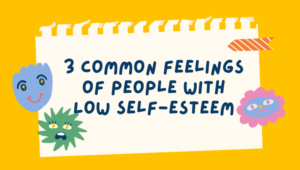Mindfulness has been shown to be an effective tool in promoting neuroplasticity. Neuroplasticity is the brain’s ability to change and adapt in response to new experiences. This means that the brain is constantly changing and evolving in response to the environment and the individual’s experiences. Mindfulness has been shown to help the brain become more flexible and adaptable, which can lead to improved mental and physical health.

What Is Neuroplasticity?
So what exactly is neuroplasticity? And how does it work?
Neuroplasticity is the brain’s ability to change its structure and function in response to experience. This means that the brain is constantly adapting and evolving in response to the things we do and the environment we’re in.
One of the most well-known examples of neuroplasticity is the way the brain adapts to new experiences. When we learn something new, our brains create new connections between neurons. This process is known as synaptic plasticity.
Synaptic plasticity is thought to be the basis for learning and memory. When we create new memories, our brains are actually physically changing. This is why it’s important to keep learning and challenging our brains throughout our lives.
Neuroplasticity is also thought to play a role in the development of mental disorders such as depression and anxiety. It is thought that these disorders may be caused by changes in the structure and function of the brain that are the result of neuroplasticity.
How Does Neuroplasticity Impact On Mindfulness?
When it comes to mindfulness, neuroplasticity is a hot topic. And for good reason – our ability to change and adapt our brain in response to our environment and experiences is pretty incredible.
But what does neuroplasticity have to do with mindfulness? Well, a lot actually.
You see, mindfulness is all about being present in the moment and paying attention to our thoughts and feelings without judgment. And neuroplasticity is all about how our brain changes and adapts in response to our environment and experiences.
So, when we practice mindfulness, we are effectively changing the structure and function of our brain. And the more we do it, the more permanent these changes become.
So, how does neuroplasticity impact on mindfulness?
Well, first of all, it allows us to change our focus of attention. For example, if we want to focus on our breath, we can use neuroplasticity to train our brain to pay more attention to our breath and less to our thoughts.
Secondly, neuroplasticity helps us to become more aware of our thoughts and feelings. When we practise mindfulness, we learn to notice our thoughts and feelings without getting caught up in them. And the more we do this, the better we become at it.
Lastly, neuroplasticity allows us to change our reactions to our thoughts and feelings. Mindfulness helps us to see our thoughts and feelings for what they are – just thoughts and feelings. We learn that we don’t have to react to them in the same way we always have. We can choose to respond in a more helpful way.
Conclusion
So if you’re looking to improve your mental health and well-being, mindfulness may be a good place to start. And, with neuroplasticity on your side, you can actually rewire your brain for greater mindfulness.






